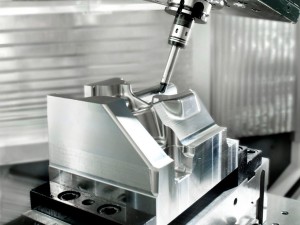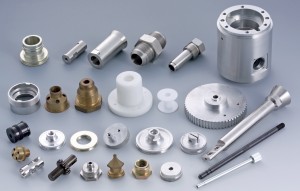Are you looking to revolutionize your manufacturing process? Look no further than CNC prototyping. In this comprehensive guide, we’ll delve into the six compelling reasons why CNC prototyping is the ultimate choice for bringing your designs to life. From its pivotal role in product development to its unparalleled precision and cost-efficiency, we’ll explore how CNC prototyping stands out as a game-changer in the industry. Join us as we uncover the key advantages, materials, applications, and environmental impact of CNC prototyping, and provide insights into choosing the right service provider. By the end of this journey, you’ll understand why CNC prototyping is not just a trend, but the future of manufacturing. Let’s dive in and discover the transformative power of CNC prototyping.
1. “Understanding CNC Prototyping: A Comprehensive Overview”
CNC prototyping is a cutting-edge manufacturing process that utilizes computer numerical control (CNC) machines to create precise and intricate parts and prototypes. Unlike traditional manufacturing methods, CNC prototyping offers unparalleled precision and repeatability, making it an ideal choice for producing complex designs with tight tolerances. By understanding the fundamentals of CNC prototyping, including its capabilities, limitations, and applications, businesses can harness its potential to streamline their product development and production processes.
2. “The Role of CNC Prototyping in Product Development”
CNC prototyping plays a crucial role in the product development lifecycle, enabling businesses to rapidly iterate and refine their designs before moving into full-scale production. By utilizing CNC prototyping, designers and engineers can transform their concepts into physical prototypes with remarkable accuracy, allowing for thorough testing, validation, and design optimization. This iterative approach not only accelerates the product development timeline but also minimizes the risk of costly errors and design flaws, ultimately leading to superior end products.
3. “Precision and Accuracy: How CNC Prototyping Delivers Quality”
One of the standout features of CNC prototyping is its ability to deliver exceptional precision and accuracy. With the capability to achieve tight tolerances and intricate geometries, CNC prototyping ensures that each component produced adheres to the exact specifications of the design. This level of precision is essential for industries such as aerospace, automotive, and medical, where stringent quality standards are paramount. By leveraging CNC prototyping, businesses can uphold uncompromising quality and consistency in their manufactured parts and prototypes.
4. “Cost-Efficiency: Saving Time and Money with CNC Prototyping”
While precision and quality are paramount, CNC prototyping also offers significant cost-efficiency benefits. By streamlining the production process and minimizing material waste, CNC prototyping allows businesses to optimize their manufacturing operations and reduce overall production costs. Additionally, the ability to quickly iterate and refine designs in the prototyping stage can lead to substantial savings by identifying and rectifying potential issues early on, ultimately preventing costly rework and delays during full-scale production.
5. “CNC Prototyping Materials: Exploring Options for Your Project”
CNC prototyping supports a wide range of materials, including metals, plastics, and composites, offering versatility to accommodate diverse project requirements. Whether it’s aluminum for lightweight components, ABS for functional prototypes, or stainless steel for durable parts, the material selection in CNC prototyping is extensive, catering to various industry needs. Understanding the characteristics and properties of different materials empowers businesses to make informed decisions when choosing the most suitable material for their specific applications.
6. “Industry Applications: Where CNC Prototyping Excels”
CNC prototyping finds applications across a myriad of industries, from aerospace and automotive to consumer electronics and healthcare. Its ability to produce complex parts with exceptional accuracy makes it indispensable for creating functional prototypes, custom components, and production parts across diverse sectors.
Similarly, the automotive industry benefits significantly from CNC prototyping, utilizing this advanced manufacturing method to create functional prototypes, custom components, and production parts. Whether it’s the development of lightweight and high-strength materials for vehicle components or the production of intricate interior and exterior parts, CNC prototyping enables automotive manufacturers to expedite the design iteration process and bring innovative products to market faster. The precision and repeatability offered by CNC prototyping are instrumental in meeting the exacting standards of the automotive industry, contributing to enhanced performance, efficiency, and overall vehicle quality.
In the realm of consumer electronics, where product miniaturization and intricate designs are prevalent, CNC prototyping emerges as a game-changer. From casings and enclosures to internal components, CNC prototyping facilitates the rapid development and refinement of electronic devices, ensuring that the final products meet the demands of modern consumers for sleek, compact, and high-performance gadgets. By harnessing the capabilities of CNC prototyping, electronics manufacturers can achieve unparalleled precision and intricacy, driving innovation and enabling the creation of cutting-edge consumer electronics that push the boundaries of technology.
Moreover, the healthcare industry has also embraced CNC prototyping for the production of medical devices, implants, and custom components. The ability to fabricate patient-specific implants and surgical instruments with exceptional precision and accuracy has revolutionized the field of medical technology, leading to advancements in patient care, surgical procedures, and treatment outcomes. CNC prototyping empowers medical device manufacturers to create tailored solutions that cater to the unique anatomical and functional requirements of patients, ultimately improving the efficacy and safety of medical interventions.
By exploring these specific applications and success stories within each industry, businesses can gain valuable insights into how CNC prototyping can elevate their manufacturing capabilities and drive innovation within their respective fields. The adaptability and precision of CNC prototyping make it an indispensable tool for realizing the vision of engineers, designers, and manufacturers across a multitude of industries, paving the way for groundbreaking advancements and transformative solutions.
Post time: Jan-18-2024










